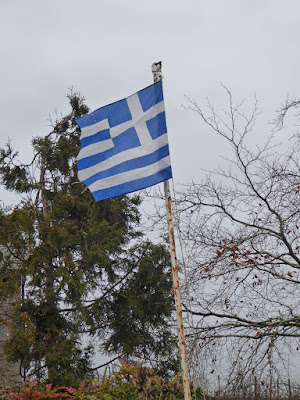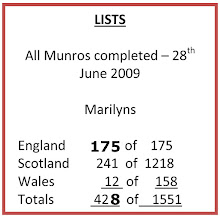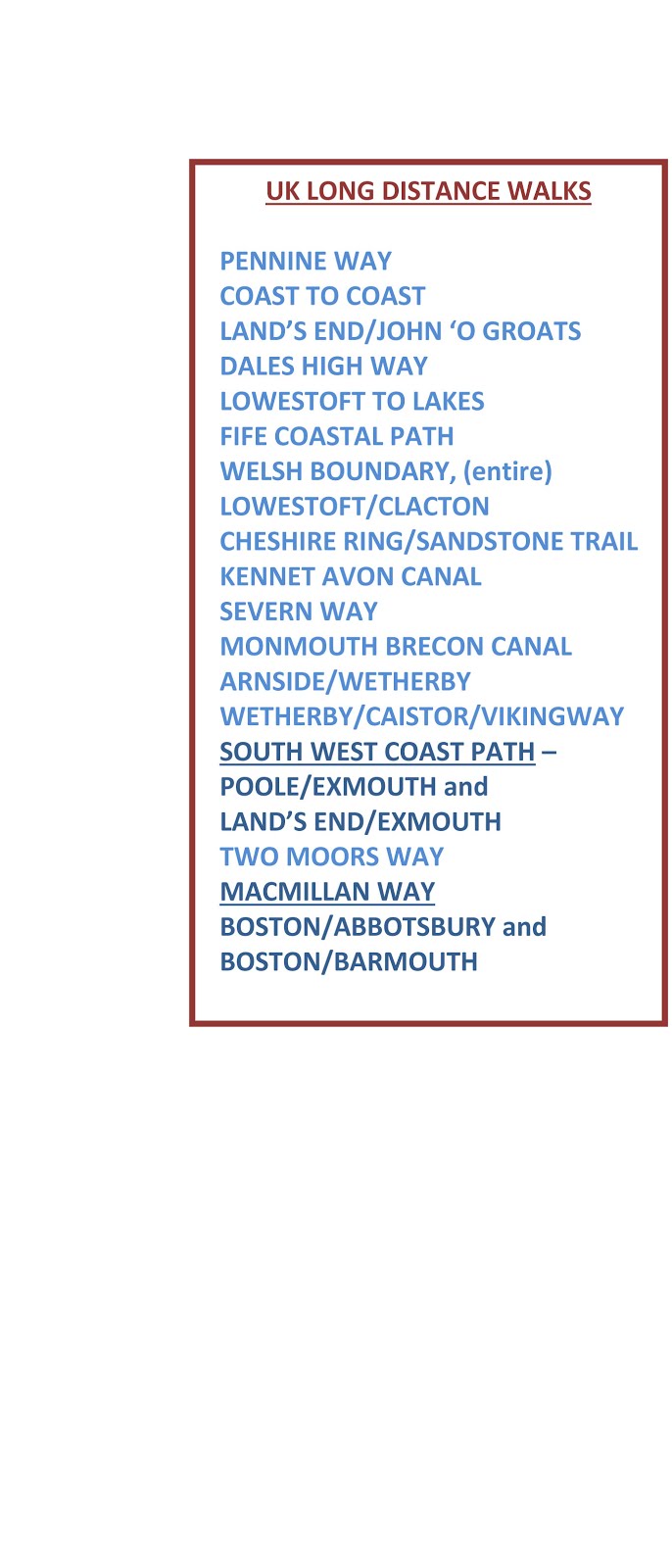Wednesday 14th December '16
After today's outing I spent a pleasurable and informative half hour finding websites that I would not otherwise have visited, which provided discoveries about flags and old street signs, to say nothing of the diversions one finds whilst browsing. So walking and blogging are, apart from their individual merits, catalysts for further fulfilment, and making new friendships - layers upon layers
I am an addicted browser, especially with maps. Although I was aware of the Cumbria Coastal Way, I found myself looking at it in relation to the railway. I have not yet plotted each stage, but I reckon I can walk this LDP (long distance footpath) in sections using the train, setting off from and returning to Arnside each time.
It was only a few hundred yards from home on the way to the station before I found the first item of interest. At the edge of the suburban road, nestling up to the kerb were two apparently stainless steel plates about three inches square and two or three feet apart carefully riveted into the Tarmac. I looked, pondered, and walked on, then after twenty yards turned back and took photos.
Arnside's unattended station has been equipped with an eerie loudspeaker, its location unidentified, but sort of frightening as there was no one else about - all a bit Big Brother. Anyway, it gave me the predictable news that my train to Grange-over-Sands was running nine minutes late. The eerie feeling continued with only one or two other occupants in the one of two coaches creating a silence unusual for public transport. Nobody came to collect my fare; a ghost train? It is only a few minutes across the viaduct to Grange and I alighted guiltily, not having paid, then I saw the guard at the end of the train, and intending to offer payment I headed towards him, but he jumped back inside and off they went. I assuaged my guilt, "Branson's Virgin Trains can afford it more than me, and it was nine minutes late."
A cloudy day was forecast but Grange, final resting place for well endowed retirees, drizzled. The long, posh promenade is furnished seaward with stout Victorian decorative iron balustrading, and landward well tended flower and shrub beds, sporting palms and other exotics surviving on the supposed Grange micro-climate.
Almost everywhere you go they tell you they have their own micro-climate.
At Kents Bank, Cart Lane had an old cast iron street sign with "Briggs, Barrow, 1883" inscribed. Internet research revealed only one reference: CLICK HERE , but I trawled through lists of other trades, retailers and manufacturers of services and goods long defunct from Victorian local authority publications in tight knit, hand assembled typeface - fascinating.
From a distance I saw an unusual flag flying at a private house - more Internet searching later, but I was disappointed with myself for not recognising for Greece
Drizzle, and more, persisted, on and off, for the rest of the walk despite a rainless forecast, so it was head down and battling on. I walked the whole ten miles without stopping in exactly four hours, arriving at the deserted Cark railway station at half past two - next train to Arnside - three fifty. There is an electronic sign board apparently sponsored by the BBC with a running band of updating BBC news to augment the arrivals and departures info. I sat damply in a lonely shelter and had my flask of coffee and munchies and played Freecell on my iPhone - should have brought a book.
After Kents Bank weather had restricted views, but there were still items of interest. I passed an industrial estate close to Cark - despite its tiny village status, Cark is home to the nationally famous Cartmel Sticky Toffee Pudding, seen on pub menus throughout the land, and also internationally famous Morecambe Bay shrimps - both headquarters were side by side on that industrial estate.
At the start of the long loop back to Cark on the seaward levee a tractor came past and trundled off into the sea. It was followed later by a few more. They went off, put-putting far out into the bay, where all was sea, but apparently very shallow - shrimp catchers - the sounds stayed with me almost all the way to Cark - there is always some sound on a walk.
 |
| The strange metal plates fixed in the road - see below for close up - any suggestions? |
 |
| The normal approach to Arnside is under that railway bridge from where you see these well maintained shrubs tended to by volunteer locals |
 |
| The retirees promenade at Grange. It would have been a popular spot on a summer's day in Victorian/Edwardian times |
 |
| What I might have seen but for drizzle and low cloud. Top right is Fleetwood and the Wyre estuary, venue of my recent Wyre Way walk. Click to enlarge |
 |
| A good and unique example of cast iron railway architecture |
 |
| The last of the apples |
 |
| Good fodder for Internet research |
 |
| Unusual, off-set squeeze stile |
 |
| Approaching the Greek flag |
 |
| Cartmel Sticky Toffee Pudding... |
 |
| ...and next door, Morecambe Bay shrimps |
 |
| Huge zoom to tractor shrimping in Morecambe Bay. You will have to take my word for it - zoom was not very successful |
 |
| Thin red line is Cumbria Coastal Way. I have walked the rest of it up to Arnside previously |











You will enjoy the Cumbria coast path. I'm a little surprised you haven't already done it with living on its doorstep. The yellow tractor was one of my babies, an MF 40 built on Barton Dock Rd, Stretford Manchester, the industrial arm of Massey Ferguson. Perkins engine with a manual shuttle transmission or an instant reverse transmission. The latter was great fun to drive.
ReplyDeleteI wouldn't be surprised if this wasn't bought from P and V Dobsons at Levens around 1968.
Compliments of the season to you and your family Conrad. We look forward to reading about your adventures in 2017.
ReplyDeleteGibson and Lynne
Your plates on the road with AGM indicates "above ground markers" where ultrasounds have been taken to pick up certain pipelines where "pigs" will pass through. Pigs are like cleaning tools for example.
ReplyDeleteAlan E. - I have walked all the route up to Arnside and Grange, and also various other bits here an there. Thanks for the tractor update - was yellow its standard colour?
ReplyDeleteYour explanation about the metal plates is beyond question - I would never have guessed. I thought it might have been some kind of parking or anti theft system (magnetic maybe) for the local resident.
------------------------------
afoot - Thanks for your greetings and of course the same to you both.
Yes. Just like JCB the majority of companies that make industrial tractors, diggers, loaders, dumpers etc use yellow. Agricultural machines are not quite as definite about colour and use the companies branding colour i.e. green for John Deere, Red for Massey Ferguson, blue for Ford etc.
ReplyDeleteMassey Ferguson who I worked for, built red machines in Coventry and yellow machines in Manchester.